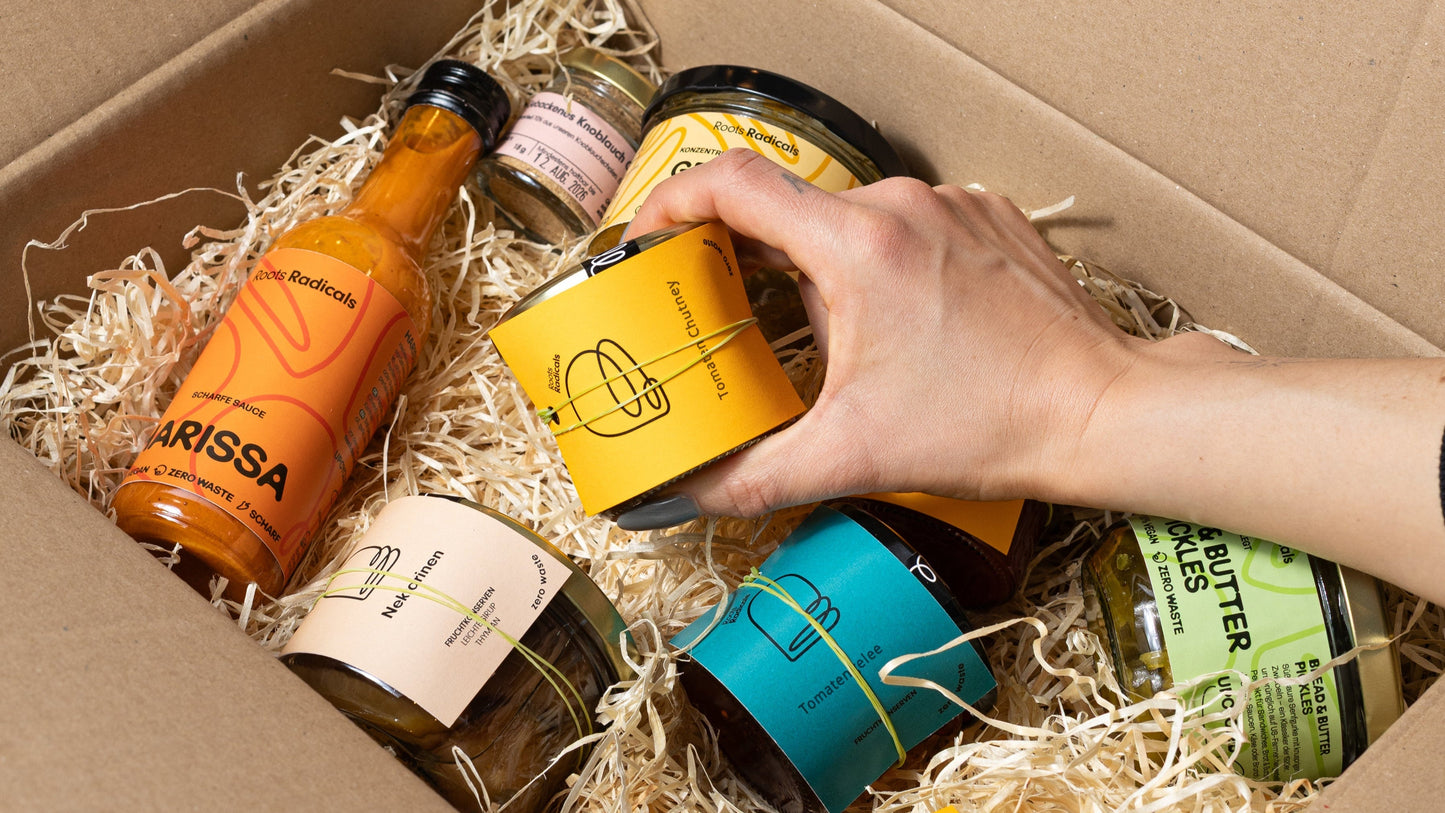
Introduction
Last weekend, I wandered through a Berlin farmers' market, baskets overflowing with fresh cabbage and crisp apples, and it hit me how perfectly timed nature is for fermentation. As a team at Roots Radicals, we love turning seasonal abundance into long-lasting treats that cut down on waste. This seasonal fermentation calendar walks you through what to preserve each month, using our signature zero-waste methods. We'll spotlight our upcycled products, made from rescued ingredients, to help you build a sustainable kitchen. Whether you're new to fermenting or a pro, this guide aligns with Berlin's local produce calendar for fresh, eco-friendly results.
Why seasonal fermentation fits zero-waste living
Fermentation isn't just about flavor; it's a smart way to extend the life of seasonal produce while boosting gut health with probiotics. At Roots Radicals, we rescue imperfect veggies and fruits, turning them into fermented gems that prevent food waste. Think of it as nature's recycling—up to 95% rescued ingredients in some products. This approach supports circular economy principles, where by-products from one item fuel another, like our sauerkraut scraps becoming apple core vinegar. Plus, fermenting locally reduces carbon footprints from imports.
I tried fermenting cabbage last fall, and it was so rewarding to see bubbles form, knowing I was saving food from landfills. Our guide features easy techniques and links to our fermented collection for inspiration. Let's dive into the months!
Month-by-month fermentation guide
Berlin's climate brings distinct seasons, with winter roots, spring greens, summer bounties, and fall harvests. We'll suggest fermentable produce based on typical availability, simple techniques, and tie in our products where they fit.
January: Embrace winter roots
In chilly January, focus on hearty cabbage and root veggies like beets and carrots. Ferment cabbage for classic sauerkraut to capture that crisp freshness.
Technique: Shred cabbage, massage with salt, and let lactic acid bacteria work their magic over 1-4 weeks.
Product spotlight: Sauerkraut
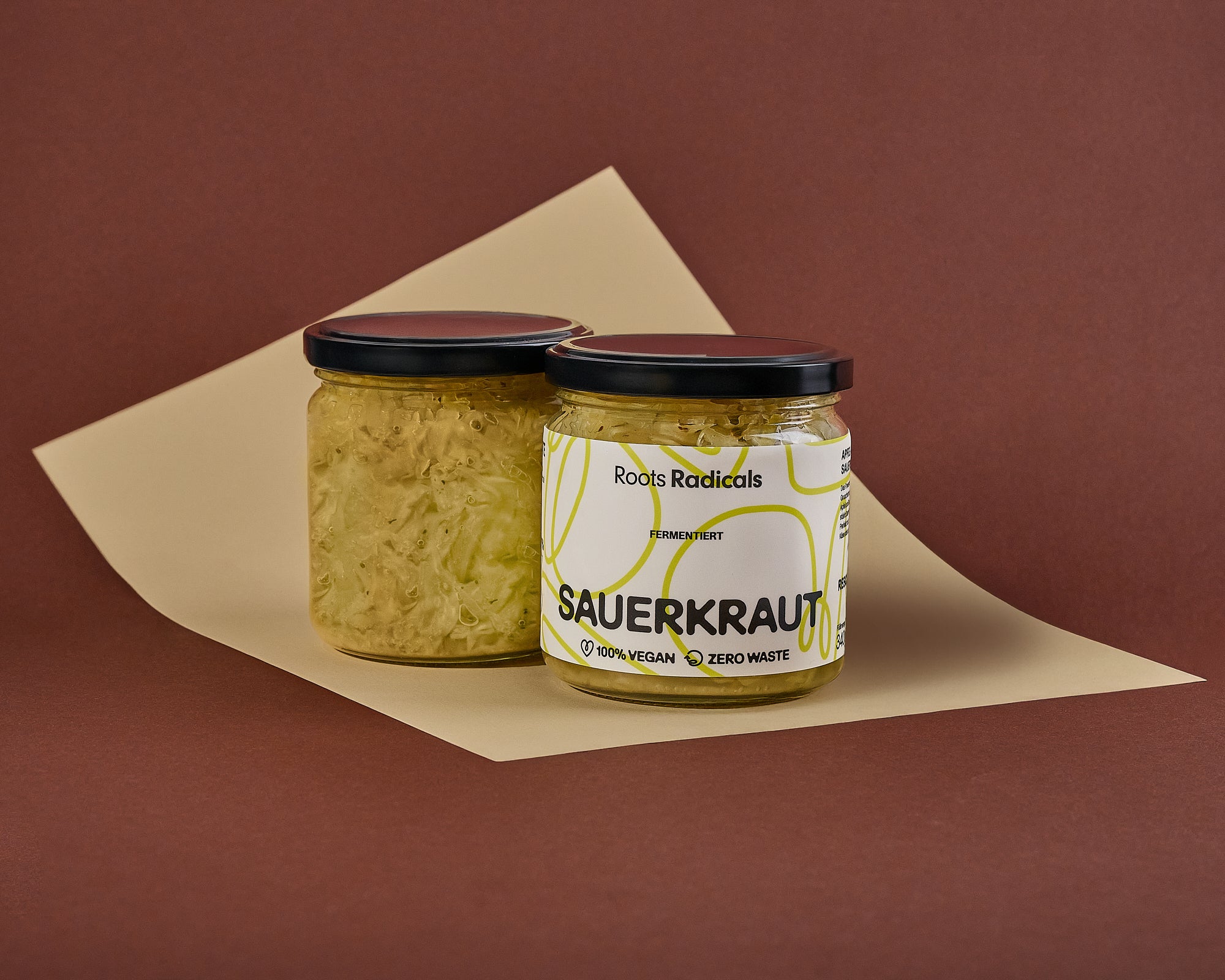
Our sauerkraut mixes cabbage with apples, coriander, and celery seeds for a floral twist. Made with 95% rescued ingredients, it's probiotic-rich and perfect for sandwiches or snacks. By-products upcycle into apple core vinegar. Grab some sauerkraut now from our relishes and pickles collection.
February: Citrus and garlic boosts
February brings lemons and garlic, ideal for fermenting to add zing to winter meals.
Technique: Slice lemons, pack with salt, and ferment for a month to mellow bitterness.
Product spotlight: Fermented lemons
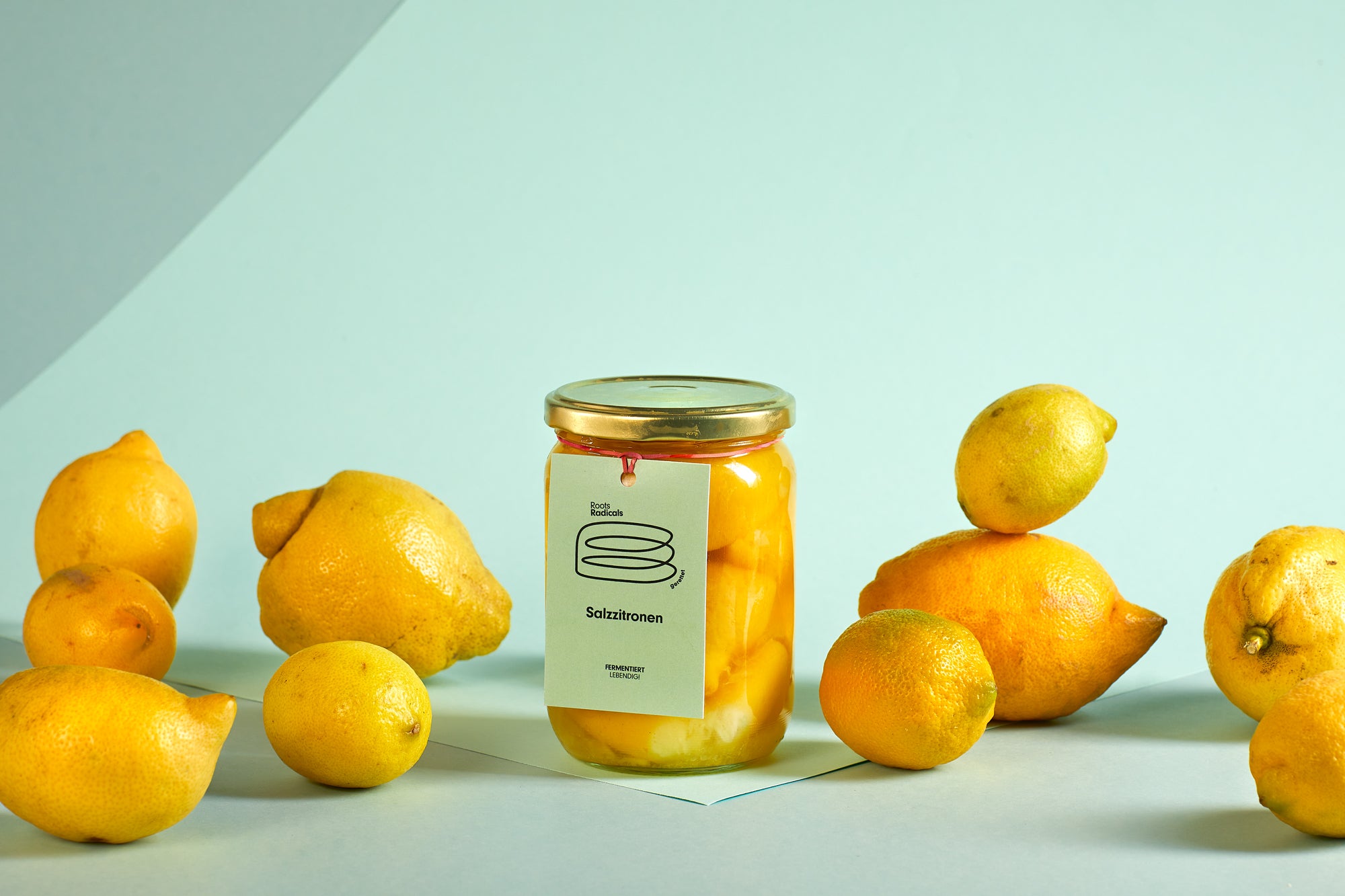
Our fermented lemons, with 95% rescued ingredients, shine in stews or hummus. They're a North African-inspired condiment that's zero-waste at its best. Try these fermented lemons and explore our savoury preserves.
March: Early greens emerge
March offers rhubarb and wild garlic, but for fermentation, try early cabbage or onions.
Technique: Lacto-ferment garlic cloves for a mild, probiotic paste.
Link to our baked garlic paste (though baked, it complements): But focus on general tips. Check our flavour boosters for ideas.
April: Asparagus season starts
April's white asparagus is iconic, but ferment radishes or early greens for crunch.
Technique: Quick ferment radishes in brine for tangy pickles.
Our products align with spring freshness—browse fermented items for inspiration.
May: Berry beginnings
May bursts with strawberries and asparagus. Ferment strawberry tops or leaves if adventurous.
Technique: Make a simple strawberry kombucha, but for solids, try kimchi-style greens.
Our steamed strawberries aren't fermented, but pair with fermented dips from chutneys and dips.
June: Cauliflower and cherries
June brings cauliflower, perfect for kimchi from leaves.
Technique: Chop leaves, add spices, ferment for 1-2 weeks.
Product spotlight: Zero waste kimchi
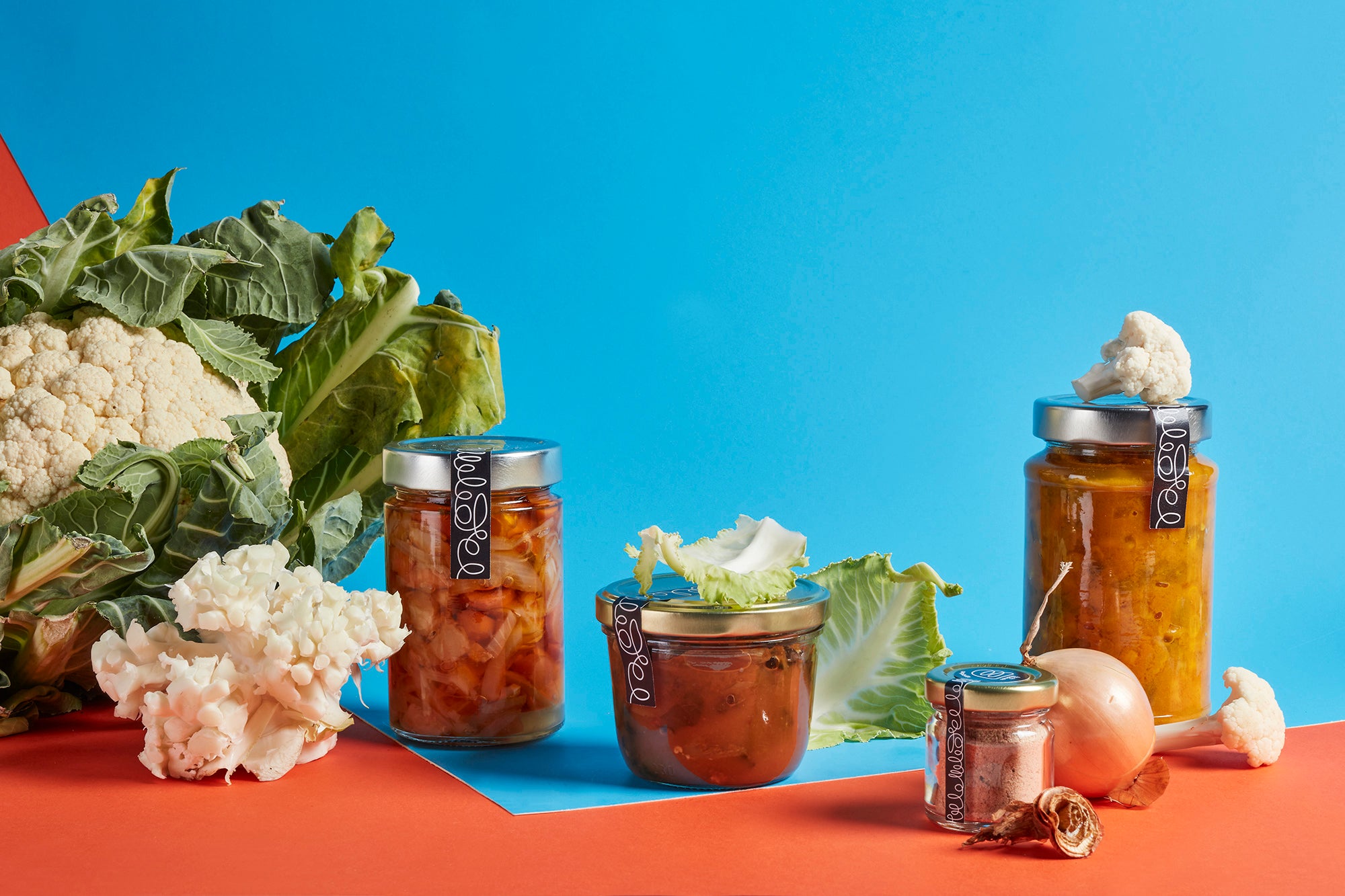
Our cauliflower leaf kimchi upcycles 60% rescued ingredients into probiotic power. Great with rice or soups. Shop kimchi varieties.
July: Cucumber abundance
July's cucumbers scream for pickling, close to fermentation in spirit.
Technique: Brine ferment cucumbers for dill pickles.
Product spotlight: Bread & butter pickles

With 80% rescued ingredients, these crunchy pickles elevate sandwiches. Get bread & butter pickles.
August: Peppers and tomatoes
August peppers are prime for hot sauce fermentation.
Technique: Blend peppers, salt, ferment for weeks.
Product spotlight: Fermented jalapeño hot sauce
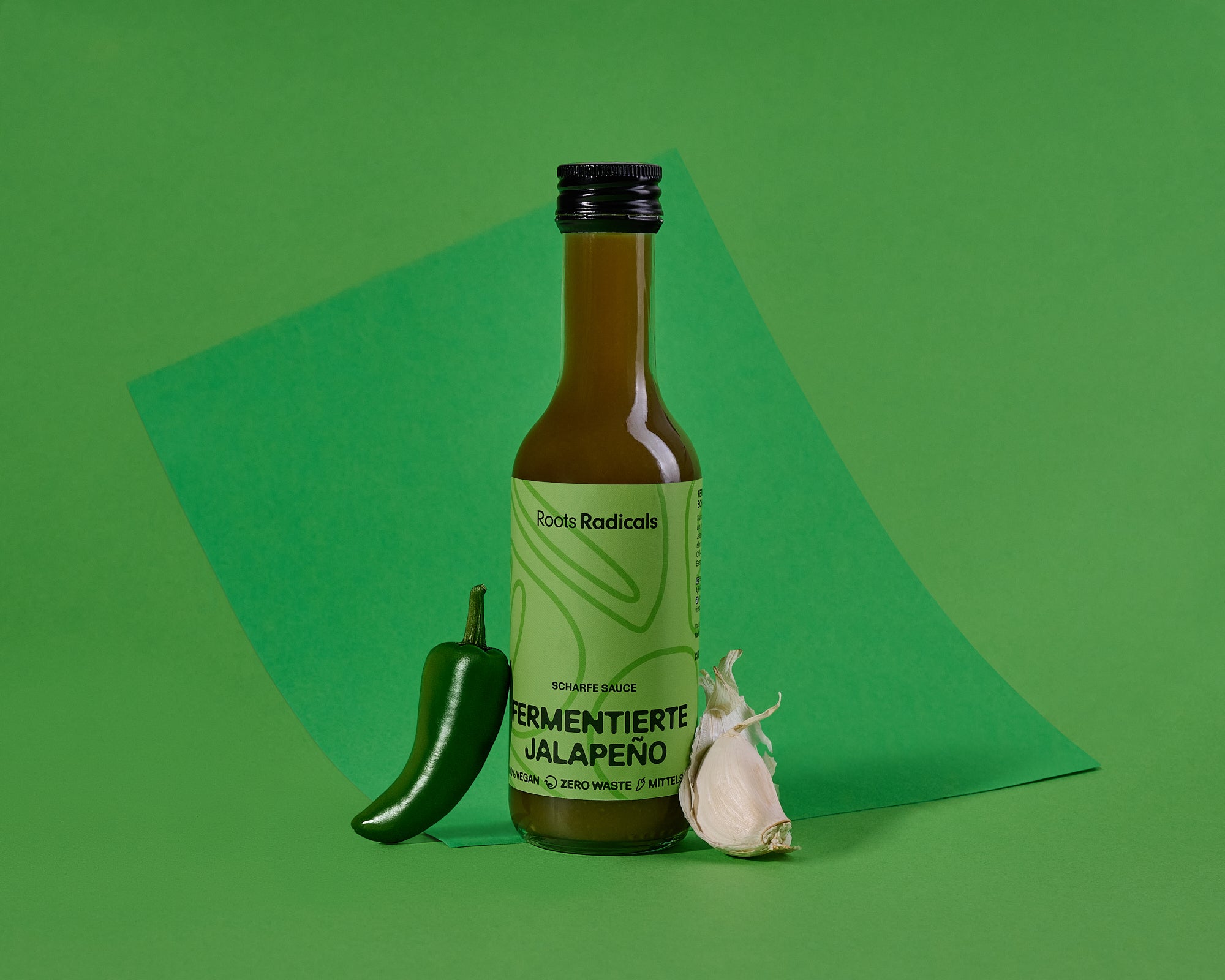
Fermented over 6 weeks with rescued jalapeños, it's a classic for pizzas. By-products become flakes. Spice up with this hot sauce from hot sauces collection.
September: Apple harvest
September apples can ferment into vinegars or add to sauerkraut.
Technique: Mix apples with cabbage for fruity kraut.
Tie back to our sauerkraut with apples.
October: Pumpkin and cabbage return
October's cabbage revives sauerkraut season.
Technique: Mass ferment for winter stock.
Revisit sauerkraut or try kimchi.
November: Brussels sprouts and roots
November roots like carrots ferment well in mixes.
Technique: Shred and salt for mixed veggie ferment.
Our vegetable bouillons complement, but check fermented options.
December: Festive citrus
December lemons for fermented preserves.
Revisit fermented lemons.
Tips for successful seasonal fermentation
Start small with clean jars and 2% salt brine. Monitor for bubbles, taste weekly. Use rescued produce to mimic our zero-waste ethos. Pair with our spices like upcycled ones for flavor.
- Keep temps at 18-22°C.
- Avoid direct sun.
- Burp jars to release gas.
| Month | Produce | Technique | Related product |
|---|---|---|---|
| January | Cabbage | Sauerkraut | Sauerkraut |
| February | Lemons | Fermented lemons | Fermented lemons |
| June | Cauliflower leaves | Kimchi | Kimchi |
| August | Peppers | Hot sauce | Fermented jalapeño |
| Benefit | Explanation | Example product |
|---|---|---|
| Probiotics | Supports gut health | Sauerkraut |
| Zero-waste | Up to 95% rescued | Fermented lemons |
| Vegan/gluten-free | Suitable for all | Kimchi |
| Product | Key ingredients | Season alignment | Rescued % |
|---|---|---|---|
| Sauerkraut | Cabbage, apple | Winter/fall | 95% |
| Fermented lemons | Lemons, salt | Winter | 95% |
| Kimchi | Cauliflower leaves | Summer | 60% |
| Fermented jalapeño hot sauce | Jalapeños, garlic | Summer | Not specified, but upcycled |
| Sambal hot sauce | Chilis, tomato | Summer/fall | 55% |
Faq
- What is seasonal fermentation?
- It's preserving local produce at peak freshness through natural lactic acid processes, reducing waste.
- Why choose Roots Radicals products?
- Our fermented items use rescued ingredients, promoting circular economy and bold flavors.
- Are your ferments vegan?
- Yes, all featured are vegan and gluten-free.
- How to start fermenting at home?
- Use our guide, salt, and jars—shop all products for starters.
- What's the zero-waste impact?
- We upcycle by-products, like from kimchi to other preserves.
Conclusion
Fermenting seasonally has transformed my kitchen into a zero-waste haven, and I hope this calendar inspires yours. From winter sauerkraut to summer hot sauces, Roots Radicals makes it easy with upcycled goodies. Ready to preserve? Shop our fermented collection today and join the circular movement.
